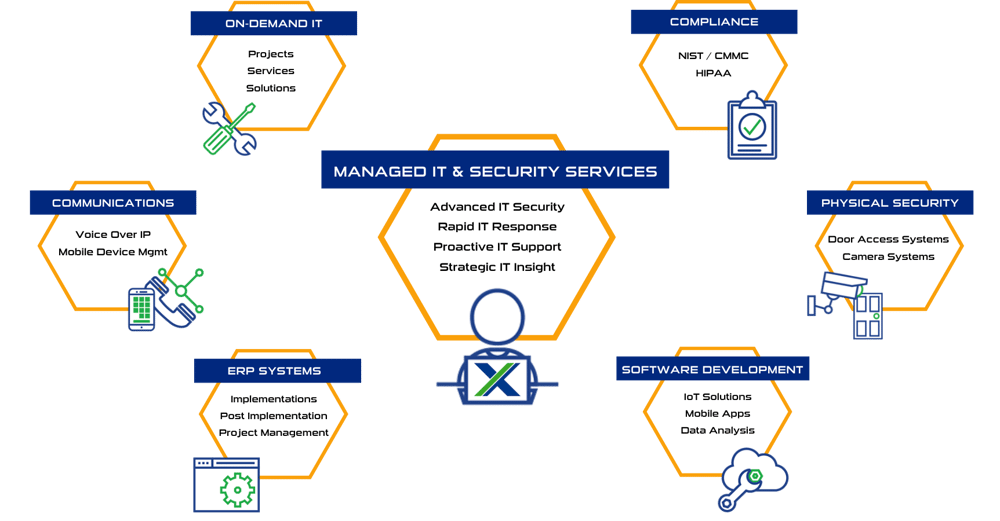Learn To Talk Tech:
Our IT Jargon Buster
A few words of a foreign language can get you a long way in a strange land.


We know that IT jargon is an alien language to a lot of people, and we do our best to keep the tech talk to a minimum when we’re working with our clients.
In any case, you probably have enough of your own office jargon to start worrying about ours.
But in a tech-led world, a lot of IT terms are cropping up more and more in everyday conversation. And if you do have a problem you need help with – or just a question you’d like to ask us about your business IT – it’ll save a lot of time if you have a few words of lingo in your locker.
Our new guide is a great place to start. It won’t tell you everything, but if you need an easy A-Z of some of the most common terms you’ll hear when you’re talking with an IT expert, then you’ve come to the right place.
Let's start at the beginning...
Adware
Software that automatically downloads adverts when you're online, such as banner ads and pop-ups
AI (Artificial Intelligence)
Systems and devices that simulate human behaviors and decisions. This can include creating systems, language processing, speech recognition, writing text and machine vision
Antivirus
Software that identifies and removes viruses from your device. Also known as anti-malware
API (Application Programming Interface)
Software that allows two or more applications or programs to communicate with each other and share information
Backdoor
A vulnerability in a security system that allows unwanted access to files and data
Bandwidth
The maximum amount of data you can send and receive in a given amount of time, over an internet connection. Imagine a big pipe compared with a small pipe
Botnet
A network of private computers infected with malware and controlled as a group to spread the virus further
Cache
A temporary file that stores information on your device to speed things up. For instance a web cache might remember the last thing you were doing so it can reload a page where you left off
(The) Cloud
Data storage and computing power that lives on remote servers, which are accessed via the internet
Corrupted
An unstable data file
Cybersecurity
Any and all security measures put in place to protect your devices, systems and network from cyber attack
Darkweb
A hidden part of the internet, accessed using special software. It’s rife with criminal activity. This is where stolen data, such as credit card details, is often sold
Data breach
A security incident where private data is
viewed or stolen by unauthorized persons
DDoS (Distributed Denial of Service)
A type of cyber attack that harms or stops a network by flooding it with data from numerous other devices
Downtime
The period of time a network or systems are offline (or ‘down’), preventing the normal running of a business
Encryption
The process of encoding data to make it unreadable without the right access information - usually a password, passkey or authentication app
Firewall
A security measure that controls what data can come in and out of your network
FTP (File Transfer Protocol)
Protocol used for transferring files from a server to a computer across a network. This is usually authenticated with usernames and passwords
GIF (Graphic Interchange Format)
The process of encoding data to make it unreadable without the right access information - usually a password, passkey or authentication app
Gigabyte (GB)
Unit of data equal to one thousand million bytes. A typical movie download might be between 1 and 4 GB
Hardware
the physical devices in your IT world - computers, printers, phones, tablets
Hotspot (Wi-Fi)
a physical location where you can gain internet access via Wi-Fi
HTML (Hypertext Markup Language)
The universal language of the internet, used to structure web pages, tell your web browser how to display them and create links between them
Infrastructure
Your entire system - your network, servers, and all your devices
iOS
Operating system manufactured by Apple and used exclusively on its hardware
IP (Internet Protocol) address
A unique number that identifies a device connected to the internet
Java
A widely used programming language used in millions of applications and devices around the world
Javascript
Unrelated to Java, Javascript is used everywhere on the internet. It’s a programming language used within all web browsers to perform a whole range of functions
Keylogger
Software used by cybercriminals to record the keys pressed on a keyboard. This information can be used to access login credentials and other sensitive information
LAN (Local Area Network)
A network of connected devices that spans a small area, such as your office or home
Malware
Malicious software, a type of virus, designed to infect your system and disrupt, damage, or gain access to your device, server or network. This can lead to the unauthorized access or theft of data and private information
Megabyte (MB)
Unit of data equal to one million forty-eight thousand, five hundred and seventy bytes
NOS (Network Operating System)
A specialized operating system for a network device, like a router or firewall
NTFS (Network Transfer File System)
A file system used by Windows for storing and retrieving files on a hard disk
Operating System (OS)
Software that manages a computer's basic functions, and provides common services for computer programs
Phishing
Scam emails that pretend to be from a credible source and aim to steal personal information and/or login credentials
Protocol
the set of rules that allows different devices to communicate with each other
Proxy Server
A server that sits between a device requesting information, and the server providing that information. For example, it could be a gateway between your laptop and the internet, that stops hackers from reaching your network
Random Access Memory (RAM)
A form of temporary computer memory that's usually used to store working data
Ransomware
Malware that encrypts sensitive data and demands a ransom for its release (ransoms should never be paid – data is often never properly released, or is only partially returned)
Router
A device that directs data to the right places in a network
Server
a computer or program that manages access to a network and holds data in one location for multiple users to access
Software
programs and apps that make the device work
Spyware
Malware that spies on the actions you take on your device. This can be used to steal data or passwords, or listen in to conversations
Trojan
A form of malware that looks harmless but conceals a virus
Troubleshoot
To analyze a problem with a view to solving it (something we do a lot of!)
UAC (User Account Control)
A feature that only allows authorized users to make changes to a system or device
USB
A type of widely used cable that connects or charges devices. This could be a keyboard connecting to a computer, or a flash drive transferring data
Virus
A malicious computer program or code that can copy itself and spread throughout a network, corrupting or damaging data and systems
Virtual Private Network (VPN)
A more secure way of connecting to a company’s network remotely, or using the internet over a public Wi-Fi connection
Wide Area Network (WAN)
A network of devices that are connected across a wider area than a LAN, and allows you to connect to smaller networks
Wireless Local Area Network (WLAN)
A wireless network that connects two or more devices, creating a LAN
Worm
A type of malware that replicates itself to spread to other devices across a network without human activation
Zip File
A file that compresses its contents to create a smaller file that's easier to share or store
We hope this has helped.
Yes, we operate in a technical world with some jargon that can be off-putting if it’s not something you’re used to talking about.
But your business IT is there to make your life easier and more efficient. We take a lot of pride in our ability to work with our clients, helping them to understand their systems without sending their heads into a spin.
So if your current IT support provider can’t do that – or you don’t have support you can call on for help and advice whenever you need them – we’d love to have a chat to find out how we can help you.

Get in touch anytime to arrange a no obligation conversation. Guaranteed jargon-free.
Have Questions? Let's Chat!
Some of Our Capabilities

Systems X provides IT solutions and strategic IT guidance with a human touch. Our purpose is to empower you to make better decisions with high-quality data and world-class service. Our creative thinking and purpose-driven solutions are the fundamental gears to guide the strategy that will connect your business with what’s next!!
Sales: (586) 884-7835
Service Desk: (586) 991-1050
Managed Services in Chesterfield, MI
50801 E. Russell Schmidt Blvd, Chesterfield, MI 48051
Managed IT Services in Detroit
400 Renaissance Center Suite 2600 - #2073, Detroit, MI 48243
Managed IT Services in Ann Arbor
2723 S State St Suite 150 - #1690, Ann Arbor, MI 48104
Managed IT Services in Cleveland
1300 Superior Ave #3413, Cleveland, OH 44114
DUNS No.: 79-009-7088
CAGE Code: 8YVR5
NAICS Codes: 541511, 541512, 541513, 541519, 517911, 611420
© 2025 Systems X Corporation